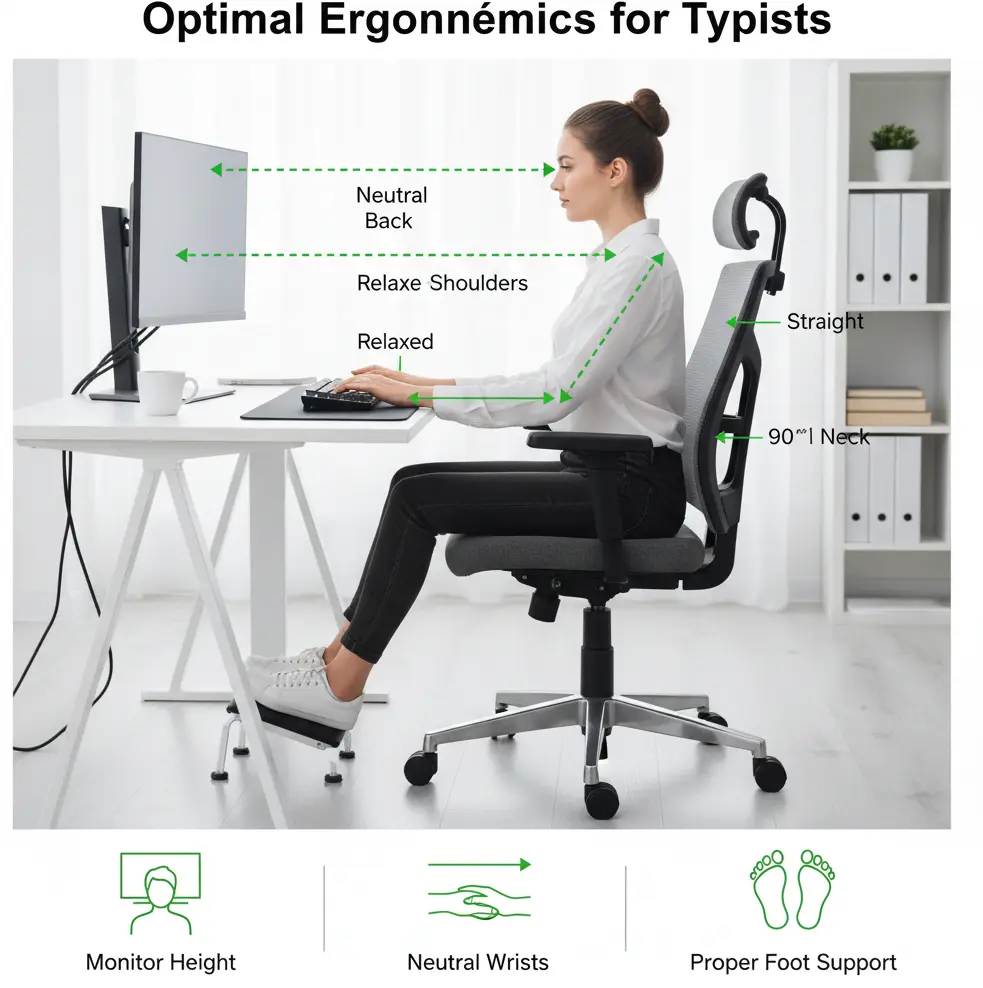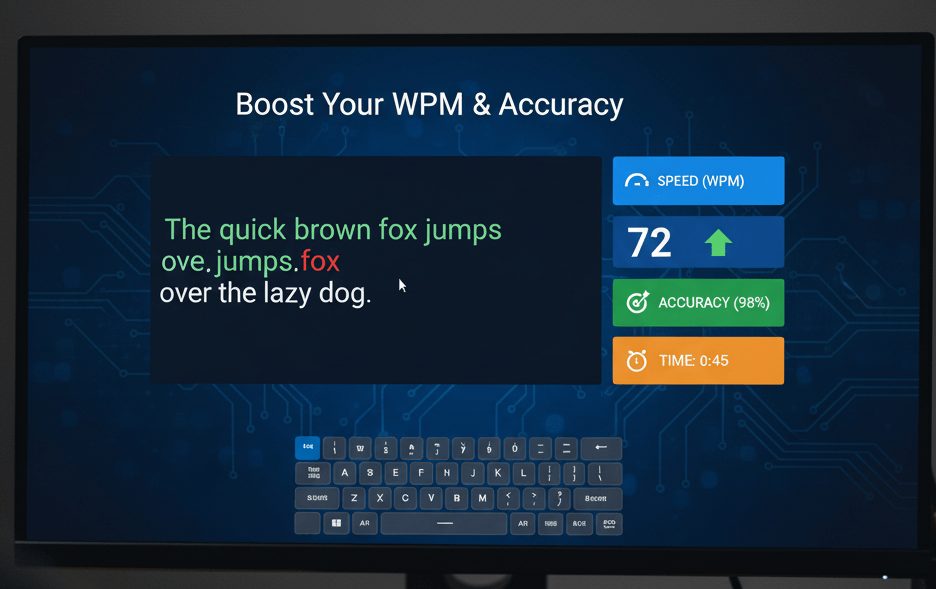Typing Ergonomics: How to Type Without Pain
Typing is a skill. But typing for a long time is an athletic event. If you run a marathon with bad shoes, you will injure your feet. If you type for hours with bad posture, you will injure your hands, wrists, and back. Ergonomics is the science of setting up your workspace to fit your body. It is the most overlooked part of learning to type.
You can be the fastest typist in the world. But it means nothing if you are in too much pain to type. This guide will show you how to set up your desk and chair for healthy, pain-free typing.

Your 5-Point Posture Checklist
Good posture is your first line of defense. It aligns your body so that no single part is under too much stress. Sit at your desk and check these five points right now.
1. Feet Flat on the Floor
Your feet should be planted firmly on the ground. If they dangle, your chair is too high. This puts strain on your lower back. If you cannot lower your chair, use a small box or a footrest to support your feet.
2. Knees at a 90-Degree Angle
Your thighs should be parallel to the floor. Your knees should be bent at a comfortable 90-degree angle. This, combined with flat feet, creates a stable base for your entire body.
3. Back Straight, Shoulders Relaxed
This is the one we all get wrong. Do not slouch. Sit up straight, as if a string is pulling the top of your head toward the ceiling. Your lower back should be supported by your chair. Your shoulders should be relaxed and down, not hunched up by your ears.
4. Elbows at a 90-Degree Angle
Let your arms hang naturally from your relaxed shoulders. Your elbows should bend at a 90-degree angle to reach the keyboard. If your elbows are bent up, your chair is too low. If they are reaching down, your chair is too high.
5. Screen at Eye Level
You should not be looking down at your laptop. This causes "text neck" and serious neck pain. Your monitor should be high enough that the top of the screen is at or just below your eye level. For a laptop, this means you need a laptop stand or a stack of books. You will also need an external keyboard and mouse.
The Biggest Mistake: Your Wrists
Here is the most common and dangerous typing habit. Do not bend your wrists up. Your hands and forearms should be in one straight line. Bending your wrists pinches the nerves in your wrist, which leads to pain and Carpal Tunnel Syndrome.
Your wrists should "float" in the air, in line with your arms. Do not rest them on the sharp edge of your desk. If you must rest them, use a soft, padded wrist rest that is level with your keyboard.
Practice With Good Posture
You cannot learn good posture just by reading. You have to practice it. Let's do a test. First, fix your posture. Check all five points. Are your feet flat? Back straight? Wrists floating?
Now, click "Start" and type the paragraph below. Focus on keeping your posture perfect. If you feel your shoulders hunch or your wrists bend, stop and fix it. This is how you build good habits.
Don't Forget to Take Breaks!
Even with perfect posture, your body is not designed to sit in one position for hours. The best thing you can do is follow the 20-20-20 rule. Every 20 minutes, look at something 20 feet away for 20 seconds. This saves your eyes.
Even better, stand up every 30-60 minutes. Walk around, stretch your arms, and roll your shoulders. This gets the blood flowing and resets your posture. Your body will thank you, and your typing practice will be much more effective.
 Typing Practice Hub
Typing Practice Hub